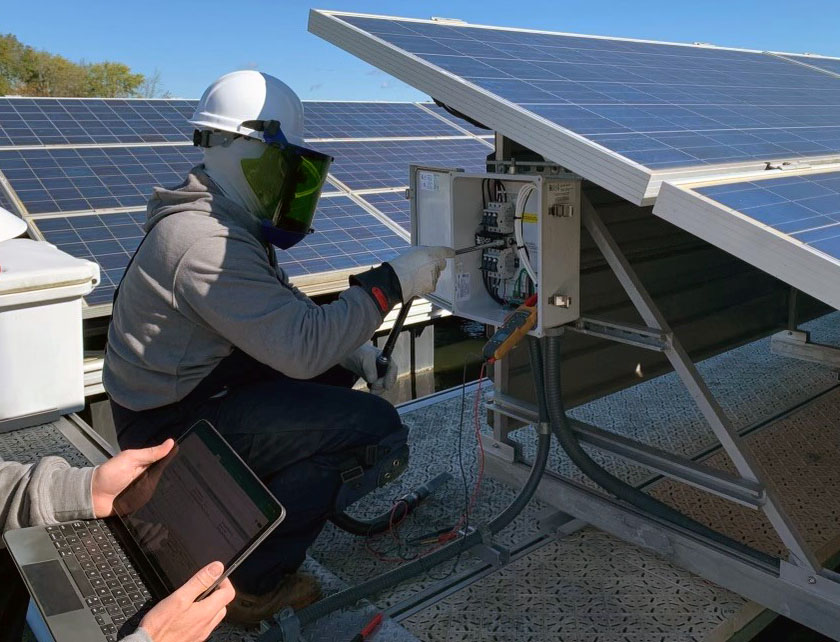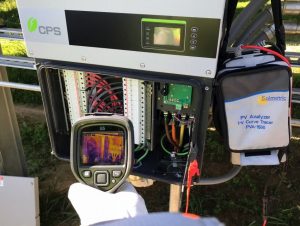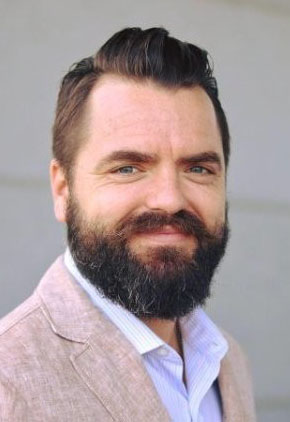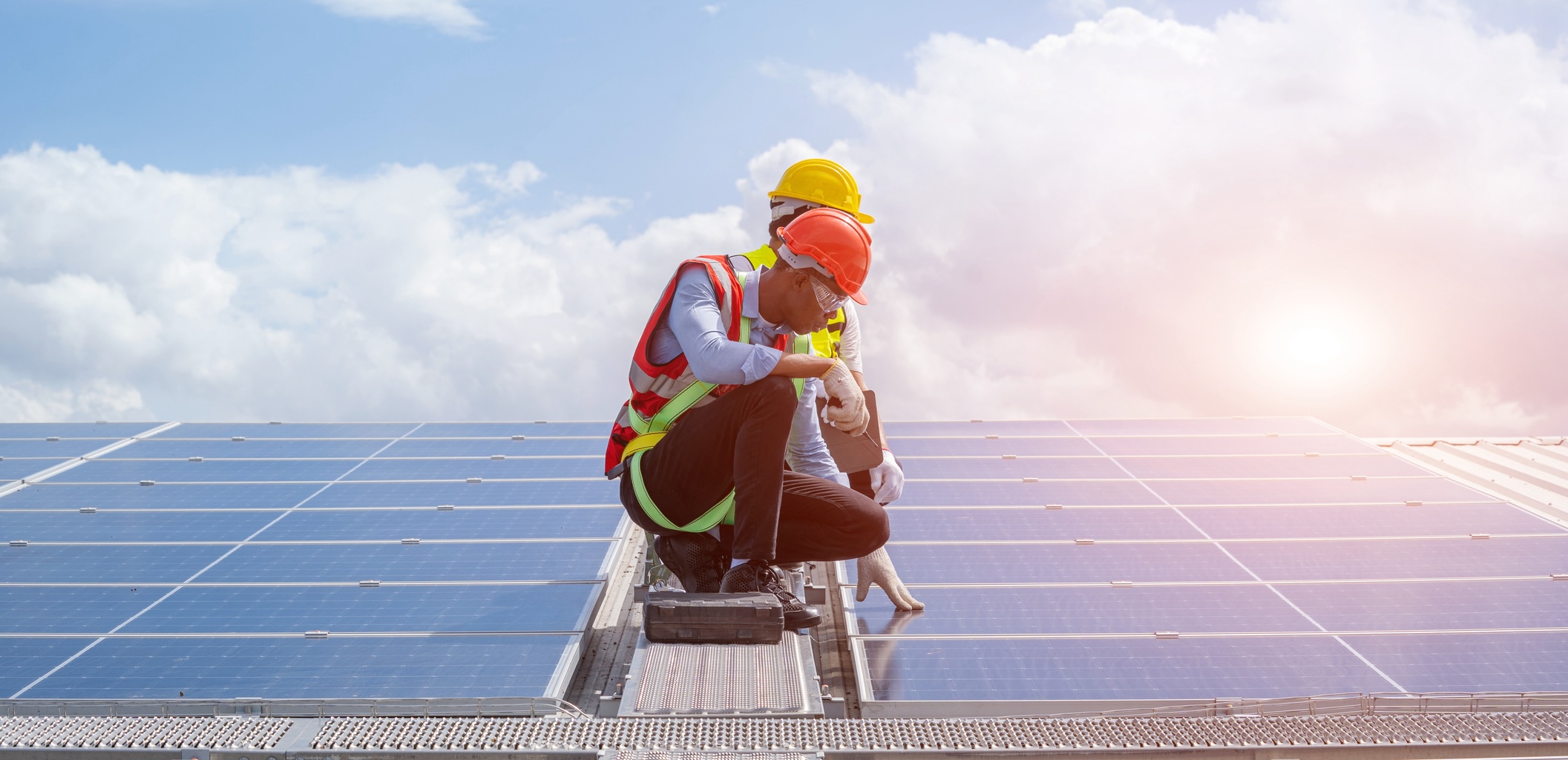Corrective maintenance (CM) is a necessary evil for many solar asset owners. After all, this maintenance is vital to keep assets running, but it usually comes with a high price tag.
However, solar developers and owners can significantly reduce the cost of CM – helping to maximize PV system uptime and ROI – by conducting a thorough and independent quality assurance and quality control (QA/QC) inspection.
Anna Waters, former VP, Commercial Operations at Omnidian, has seen several systems fully shut down not long after energization because a QA/QC was not performed. The root cause can often be tied to workmanship.
“A seemingly cosmetic item can eventually become a big problem,” Waters said. “One inverter going down causes some frustrating system downtime, but it may also signal a more serious safety issue that sets off enough alarm bells to take down an entire portfolio for an extended period of time.”
O&M Starts with QA/QC
Many solar PV system issues that will require CM can be caught right after installation during QA/QC. An independent QA/QC can identify workmanship errors or oversights that will result in immediate equipment failures, safety hazards, or worst case, thermal events.
On-site inspections can also uncover issues that might go unnoticed until years down the road, providing long-term operations and maintenance (O&M) savings for system owners.
“Addressing any workmanship issues while the installer’s crew is still on site will save the asset owner time and money, and help optimize energy production,” said Waters. “If identified early, workmanship issues can be corrected and will prevent potential safety concerns and ensure peak production and return on investment from your asset.”
This just makes sense: a car manufacturer wouldn’t ship a vehicle fresh off the line to a customer without a thorough inspection, and a solar PV electrical power plant – especially if built atop another business – should require just as much due diligence to prevent failures and ensure safe operation.
No C&I System is Too Small
Smaller solar asset owners might consider skipping QA/QC thinking it doesn’t pencil, but according to recently released industry statistics, bypassing QA/QC is a risky calculation, regardless of system size.

HelioVolta, a software developer and independent technical advisory and inspection service provider in the Omnidian field service network, recently published internal data showing a majority of their PV inspections (62%) find critical or major safety issues.
The SolarGrade PV Health Report analyzed more than 60,000 PV system health data points from hundreds of independent project assessments conducted from 2021 to 2023. Seventy-five percent of the projects inspected are installed on commercial rooftops in the U.S. and Puerto Rico, with system sizes ranging from 100 kW to 350 MW.
Key Findings:
- 62% of inspections found safety issues such as overheating components or improperly installed equipment.
- 59% of all issues are related to wire management and field-made solar connectors.
- 91% of Critical/Major Issues are in dc distribution (74% of all issues)
In another recent report, Clean Energy Associates reported “major safety issues” in 97% of 600 solar rooftops it audited globally. CEA’s report included more workmanship and quality issues that often lead to system downtime. The top issues and safety concerns reported by CEA include:
- Grounding issues (49%)
- Damaged modules (47%)
- Cross-mated connectors (41%)
- Poor terminations (40%)
- Improperly assembled connectors (40%)
Others commonly seen issues include module hotspots, cables on sharp edges, water ingress and broken/damaged connectors.
“On-the-ground solar fieldwork generates vital safety and reliability data that cannot be obtained from any other source – not drone or plane flyovers, remote monitoring tools, or even inverter error logs,” commented James Nagel, Co-founder of HelioVolta and SolarGrade. “Standardized, high-quality visual and thermal inspections are necessary to maximize PV system uptime and prevent safety incidents like fires and thermal events.”
Considering the expensive consequences of missing such basic steps early in a project’s life, budgeting for a thorough third-party QA/QC to avoid corrective maintenance is one of the best investments a solar asset owner can make.
Minimizing Corrective Maintenance with Monitoring
That initial QA/QC will grab a lot of low-hanging fruit to prevent corrective maintenance, but the conditions of electrical equipment exposed to elements will always be variable. Staying ahead of CM on a more ongoing basis requires a thorough preventive maintenance (PM) plan, including:
- 24/7 proactive monitoring
- Annual preventive maintenance site inspections
- Aerial infrared (IR) inspection
“Having a strong preventive maintenance plan is like a health check on how your site is doing; you wouldn’t want to skip your own physician checkups,” Waters said. “You could decide to instead budget for corrective maintenance, but you never know when or if it’s going to happen.”

Ongoing AI-powered monitoring will reveal early warning signs in the behavior patterns of the energy production. “For example, say a site has 10 inverters. At Omnidian, our proprietary monitoring system allows our in-house experts to see that one of those inverters is dropping midday to 60% while the others are at 100%. That inverter is probably overheating, most likely because it’s at max capacity.”
“You can learn a lot from data if you know how to read it,” Waters said. “You can often see patterns that point to issues that will happen. Based on the pattern in that example, we’d reach out to the OEM to see if it’s a software issue. If not, it could be the fan. We can proactively take steps in order to prevent the potential for device outage and replacement.”
A recurring onsite PM visit should occur annually prior to peak season to ensure maximum production. For smaller assets, or if there are no notable alerts to check, every other year might make sense.
An aerial IR scan for larger assets (over 1.5 MW) is often a cost-effective tool that helps detect unforeseen issues, while also making onsite teams more effective. Technicians can better locate problems right at the source instead of wasting time searching for the right string.
“When you have the aerial scan, you can see the condition of the modules, which you’re not able to see with your naked eye,” Waters said.
Bottom Line
All of these services can be handled by different subcontractors, but juggling multiple O&M service providers can slow response times. Given how crucial a PM plan is for a solar PV asset – from QA/QC to ongoing monitoring to on-site work – sourcing it all from one provider ensures nothing falls through the microcracks.
With Omnidian’s 24/7 monitoring and nationwide network of vetted field service providers (with built-in regional redundancy), solar asset owners can stay on top of any system issue and address it on-site when it makes the most financial sense.
“As an asset owner, you never want to see corrective maintenance early in an asset’s life. You have to when it’s necessary, even if you don’t want to spend that money,” Waters said. “But when it helps optimize your production, you’re going to want to do it. Performance is the most important metric for us all.”
As the saying goes, an ounce of prevention is worth a pound of cure. By investing the resources up front, PV system owners and operators can realize production gains via increased asset uptime, a reduction in CM needs and operating expenses, and an improved internal rate of return.









